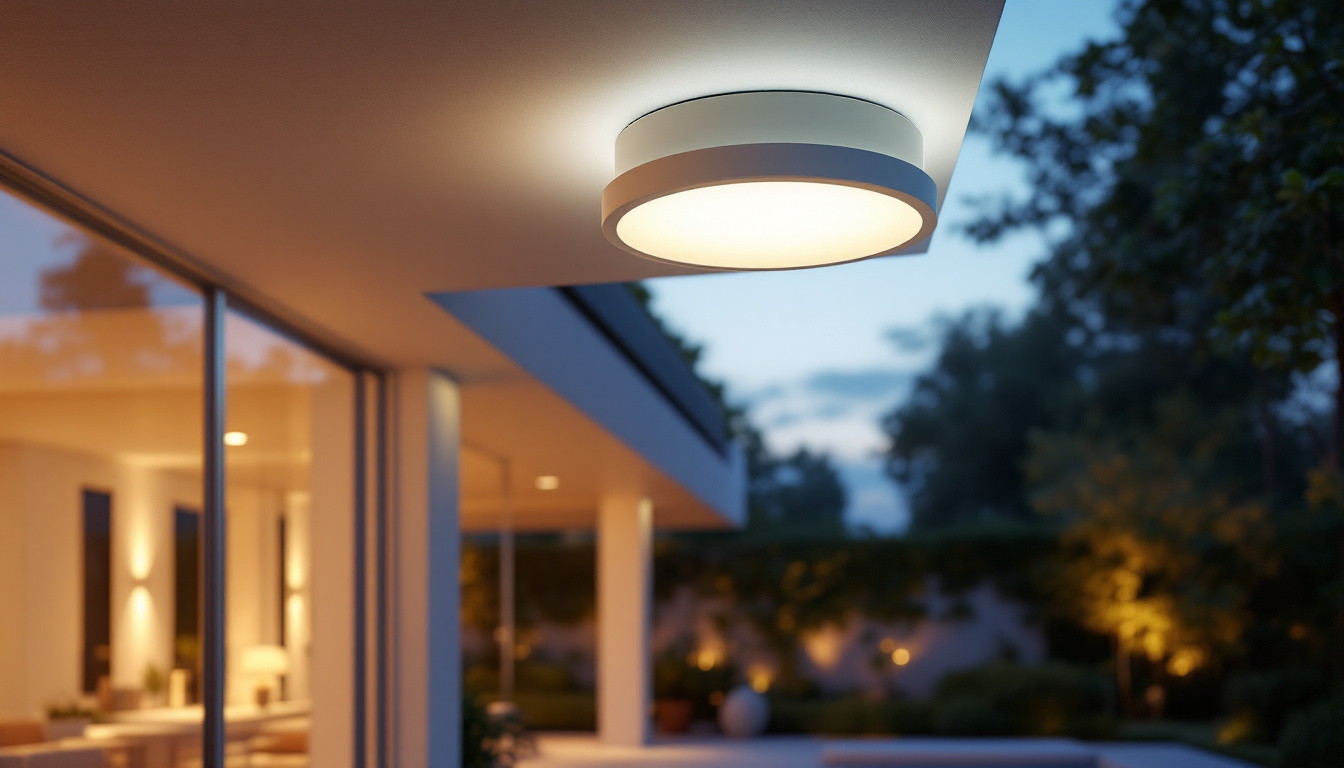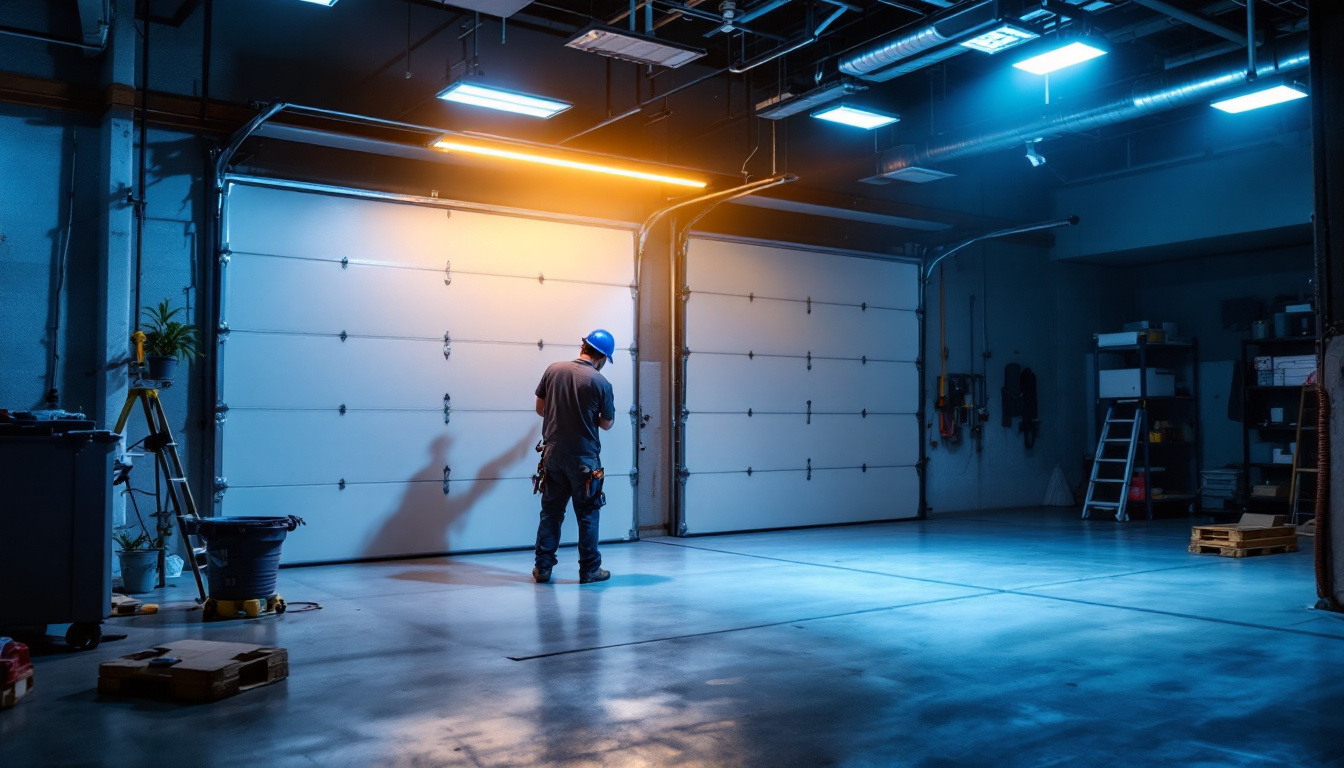

outdoor lighting plays a crucial role in enhancing the aesthetics and safety of residential and commercial spaces. For lighting contractors, understanding the nuances of outdoor ceiling light fixtures is essential to provide clients with the best solutions. This article delves into various aspects of outdoor ceiling lights, offering valuable insights and practical advice for contractors in the field.
outdoor ceiling light fixtures are designed to illuminate outdoor spaces while withstanding the elements. These fixtures come in various styles, sizes, and materials, making it essential for contractors to understand their features and applications. The right choice can significantly impact the ambiance and functionality of outdoor areas.
There are several types of outdoor ceiling light fixtures, each serving different purposes. Common options include flush mounts, pendant lights, and lantern-style fixtures. Flush mounts are ideal for low ceilings and provide a sleek look, while pendant lights can add a decorative touch and are perfect for areas like patios or porches. Lantern-style fixtures often evoke a classic charm and are suitable for traditional homes.
When selecting a fixture, consider the specific needs of the space. For example, a covered patio may benefit from pendant lights that hang lower, creating an inviting atmosphere, while a garage or entryway might require more utilitarian flush mounts for adequate illumination. Additionally, it’s worth noting that some fixtures come with integrated LED technology, offering energy efficiency and longer lifespans compared to traditional bulbs. This not only reduces electricity costs but also minimizes the frequency of replacements, making them a practical choice for outdoor settings.
outdoor fixtures must be constructed from durable materials to withstand weather conditions. Common materials include aluminum, stainless steel, and weather-resistant plastics. Aluminum is lightweight and resistant to rust, making it a popular choice. Stainless steel offers a modern aesthetic and excellent durability, while high-quality plastics can provide cost-effective options without sacrificing longevity.
Additionally, consider the finish of the fixtures. Powder-coated finishes can enhance resistance to corrosion and fading, ensuring that the lights maintain their appearance over time. Selecting the right materials will not only ensure longevity but also affect the overall aesthetic appeal of the installation. Furthermore, some manufacturers offer fixtures with UV-resistant coatings to prevent discoloration from prolonged sun exposure, ensuring that your outdoor lighting remains vibrant and attractive. It’s also beneficial to explore options with adjustable brightness settings or motion sensors, which can enhance security and energy efficiency while adapting to the specific needs of your outdoor environment.
Proper installation is critical for the performance and safety of outdoor ceiling light fixtures. Contractors must be aware of various factors that can influence the installation process, including local codes, electrical requirements, and environmental conditions.
Before beginning any installation, it is essential to familiarize oneself with local building codes and regulations. These codes may dictate specific requirements for outdoor lighting, including fixture types, placement, and energy efficiency standards. Compliance with these regulations not only ensures safety but also protects contractors from potential liabilities.
In some areas, permits may be required for outdoor electrical work. It is advisable to check with local authorities to determine what is necessary before proceeding with any installation. This proactive approach can save time and prevent complications down the line. Furthermore, staying updated on any changes to local codes is crucial, as municipalities may revise regulations to enhance safety or promote sustainability. By being informed, contractors can provide clients with the best advice and ensure that installations meet the latest standards.
Outdoor ceiling light fixtures often require different electrical considerations than indoor fixtures. It is crucial to ensure that all wiring is appropriately rated for outdoor use, which typically involves using weatherproof junction boxes and conduit. Additionally, GFCI (Ground Fault Circuit Interrupter) protection is often mandated for outdoor circuits to prevent electrical shock hazards.
Contractors should also consider the power source and ensure that the circuit can handle the load of the fixtures being installed. Proper planning and adherence to electrical codes will contribute to a safe and effective lighting installation. Moreover, it is important to evaluate the potential for voltage drops, especially in longer runs of wire. Using thicker gauge wire can help mitigate this issue, ensuring that the lights operate at optimal brightness and efficiency. Additionally, incorporating energy-efficient LED fixtures can not only reduce energy consumption but may also qualify for rebates or incentives in some regions, making it a financially savvy choice for homeowners.
The visual appeal of outdoor lighting is just as important as its functionality. Lighting contractors must balance aesthetics with practicality to create inviting outdoor spaces. Understanding the design elements that influence outdoor ceiling light fixtures can enhance the overall look and feel of an area.
When selecting outdoor ceiling light fixtures, it is essential to consider the architectural style of the building. Fixtures should complement the home’s design, whether it’s modern, traditional, or rustic. For instance, sleek, minimalist fixtures may suit contemporary homes, while ornate lanterns may be more appropriate for colonial-style houses.
Contractors can also advise clients on how to create a cohesive look by recommending fixtures that match or contrast with other outdoor elements, such as railings, furniture, and landscaping. A well-thought-out design can significantly enhance the curb appeal of a property. Additionally, the choice of materials plays a critical role in this process; for example, using weather-resistant metals or natural wood finishes can ensure that the fixtures not only look good but also withstand the elements over time. This attention to detail can elevate the outdoor space from merely functional to truly stunning.
Effective outdoor lighting often involves layering different types of light to create depth and interest. Ceiling fixtures can serve as a primary source of illumination, but combining them with other lighting elements, such as wall sconces or pathway lights, can enhance the overall ambiance.
Contractors should encourage clients to think about how they use their outdoor spaces. For example, a dining area may benefit from brighter ceiling lights, while a cozy seating nook might require softer illumination. By layering light, contractors can help clients achieve a more dynamic and inviting outdoor environment. Furthermore, incorporating smart lighting technology can add another layer of versatility; clients can adjust brightness and color temperature according to the time of day or occasion, creating an atmosphere that is both functional and mood-enhancing. This adaptability not only improves usability but also allows for a personalized touch that reflects the homeowner’s style and preferences.
In today’s environmentally conscious world, energy efficiency is a significant consideration for outdoor lighting. Contractors should be well-versed in the options available for energy-efficient outdoor ceiling light fixtures, as well as the benefits they offer to clients.
LED (Light Emitting Diode) technology has revolutionized outdoor lighting. LED fixtures consume significantly less energy than traditional incandescent or halogen bulbs, making them an excellent choice for outdoor applications. They also have a longer lifespan, reducing the frequency of replacements and maintenance costs.
Contractors should educate clients on the advantages of LED lighting, including lower energy bills and reduced environmental impact. Additionally, many LED fixtures now come in various styles and designs, ensuring that aesthetic preferences are not compromised for energy efficiency.
Smart lighting technology is becoming increasingly popular in outdoor applications. These systems allow homeowners to control their outdoor lighting remotely, adjust brightness levels, and set schedules for when lights turn on and off. Incorporating smart technology can enhance convenience and security for clients.
Contractors should be familiar with various smart lighting options and how to integrate them into outdoor ceiling fixtures. Educating clients about the benefits of smart technology can help them make informed decisions that align with their lifestyle and preferences.
Proper maintenance is essential to ensure the longevity and performance of outdoor ceiling light fixtures. Contractors should provide clients with guidance on how to care for their lighting installations, helping to prevent issues that may arise over time.
Outdoor fixtures are exposed to the elements, which can lead to dirt, grime, and corrosion. Regular cleaning is crucial to maintain their appearance and functionality. Contractors can recommend specific cleaning methods and products that are safe for the materials used in the fixtures.
Additionally, periodic inspections can help identify potential issues before they become significant problems. Checking for loose connections, rust, or damage can ensure that the fixtures continue to operate safely and effectively.
In regions with seasonal weather changes, preparing outdoor lighting for winter or severe weather can extend the lifespan of fixtures. Contractors should advise clients to take precautions, such as removing bulbs or covering fixtures during harsh conditions. This proactive approach can prevent damage and ensure that the lighting remains functional year-round.
Outdoor ceiling light fixtures are a vital component of any outdoor lighting design. For lighting contractors, understanding the various types, installation considerations, design elements, and maintenance requirements is essential for delivering high-quality service to clients. By staying informed about the latest trends and technologies in outdoor lighting, contractors can enhance their offerings and ensure customer satisfaction.
Ultimately, the goal is to create safe, functional, and aesthetically pleasing outdoor spaces that meet the needs of homeowners and businesses alike. Through careful selection, installation, and maintenance of outdoor ceiling light fixtures, contractors can contribute to the beauty and safety of outdoor environments, ensuring that their clients enjoy well-lit spaces for years to come.
Ready to elevate your outdoor lighting projects with fixtures that blend quality, durability, and style? Look no further than LumenWholesale. Our extensive range of spec-grade lighting products is designed to meet the demands of any outdoor space, ensuring you deliver excellence to your clients. With unbeatable wholesale prices and the convenience of free shipping on bulk orders, you can trust LumenWholesale to provide the best value without compromising on quality. Discover our wholesale lighting selection and make your next installation a shining success.

Discover why purchasing network-controlled lighting in bulk from local distributors might not be your best choice.

Discover how LED lights are revolutionizing garage projects for lighting contractors.

Discover why purchasing wrap lighting fixtures in bulk from local distributors might not be the best choice.

Discover the transformative role of ballast lights in energy-efficient lighting systems.
Get notified when NEW deals are released.
Optimize your budget with wholesale discounts.
Only top-quality, specification-grade lighting products.
No additional costs at checkout - what you see is what you pay.
We understand the unique needs of contractors.